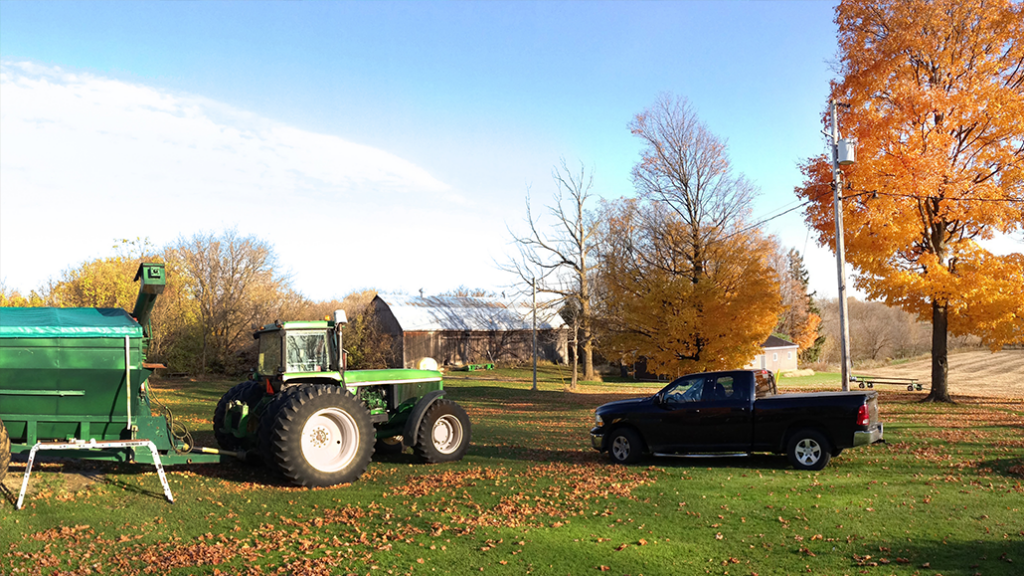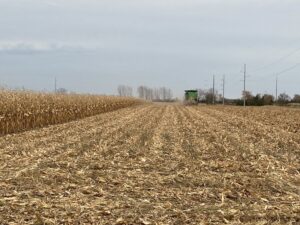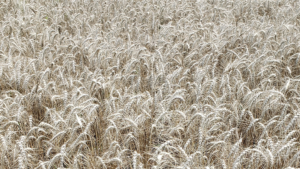Rural crime on the rise
TIPS FOR PROTECTING YOUR FARM AND YOUR PROPERTY

YOU DO NOT have to spend a lot of time at a local coffee shop or scrolling through #OntAg Twitter to hear about a big concern in rural Ontario: the increase in rural crime. Rural residents regularly hear reports of stolen pickup trucks, farm equipment, recreational vehicles, and even livestock — in April and May 2023, the OPP reported 45,000 chicks were stolen from a farm near Exeter, Ontario.
WHAT DO THE STATISTICS SAY?
While crime is often considered to be more prevalent in urban centres, the statistics do not back this up. According to Statistics Canada, in 2021, police services serving a mostly rural population served 15 per cent of the population in the provinces but reported 24 per cent of violent crimes, 18 per cent of property crimes, 30 per cent of Criminal Code traffic offences and 23 per cent of other Criminal Code violations.
And the gap has increased over the past 10 years; in 2011, rural police services reported 6,855 incidents per 1,000,000 population, compared to 5440 in urban areas — 26 per cent higher. By 2021, the rural crime rate was 43 per cent higher than the urban rate (7,033 incidents per 100,000 population versus 4,919).
And while crime rates dropped overall during the pandemic, the drop was more significant in urban areas, at 11 per cent, compared to rural areas, at two per cent in 2021. By 2022, the rural crime rate had rebounded to pre-pandemic levels.
When it comes to property crimes — such as break and enter, theft, robbery, vandalism, and possession of stolen goods — the rate of police-reported crimes in 2021 in rural areas was 22 per cent higher than in urban areas.
CRIME PREVENTION
“Thieves are getting bolder — and better — in stealing cars but are also increasingly making targets of farmers and rural property owners,” writes Paul Maurice, a director of the Ontario Federation of Agriculture (OFA). “Reports of brazen farm equipment and other thefts are becoming more common, from GPS receivers and catalytic converters to trucks and livestock.”
OFA encourages farmers to implement some basic security measures (listed to the right) to help secure their property.
#POCKETYOURKEYS
Vehicle thefts — and thefts of farm equipment like tractors and ATVs — are on the rise, particularly in rural Ontario. Reports of thefts from farmyards and fields during planting and harvest season are regularly reported.
The #pocketyourkeys social media campaign, initiated by the OPP in 2018, encourages farmers to prevent theft by simply taking the keys out of ignition – or by not leaving them under the mat or the sun visor.
“Regardless, if you start farming at four o’clock in the morning, six o’clock, or if you’re doing it all night long, when you pull that pickup truck into your laneway or the field, we’re asking you to simply remove your keys,” says Constable Ed Sanchuk of the OPP, who recorded a public service announcement with third-generation Norfolk County farmer Peter Shabatura.
Shabatura says that leaving keys in the truck when going off to do fieldwork is something that has been common in his experience.
“As a third-generation [farmer], I’ve dealt with the first and the second [generation], all the time, leaving their keys in, going off in the tractor or the combine, the pickup truck sitting in the middle of the field, and that’s how things get stolen,” he says.
Sanchuk stresses that nine out of 10 vehicles stolen are used in other criminal activities, which can lead to further public safety impacts such as motor vehicle accidents.
And items found in the stolen vehicle — including automatic garage door openers, house keys, and GPS systems that direct thieves to your home — can lead to further thefts and criminal activity.
“Fifty per cent of the thefts can simply be prevented by pocketing your keys,” says Sanchuk.
IF YOU WITNESS OR HAVE INFORMATION ABOUT A CRIME
In emergencies or if a crime is in progress, call 911 immediately to alert the police.
If you have information about a crime (such as witnessing suspicious activity, identifying a suspect described in a police statement, or observing stolen property), you can call the OPP non-emergency line at 1 888 310-1122 or your local police force’s non-emergency line.
You can also contact Crime Stoppers to make an anonymous tip by calling 1-800-222-TIPS.
BASIC SECURITY MEASURES
Post no trespassing signs at every entry to your property
While this will not necessarily keep intruders out, it will serve as a notice that they are not welcome on your property without consent. Be sure to put the signs at every entrance, including ones that aren’t regularly used. Biosecurity signs do not serve the same purpose, so be sure to also post no trespassing signs.
Control entry with gates
A gate – locked if necessary – can clearly mark the boundary between your property and the road.
Invest in good-quality locks
Actually using them, though, is important. Keyed locks are preferable to keypad locks, where unauthorized individuals can observe and use codes to enter your property.
Invest in lighting
Good quality lighting installed around a farm property can help deter theft and make it more difficult for intruders to hide. Installing motion detectors can help conserve electricity.
Install barn alarms
Alarms that notify property owners or create noise can help deter thieves.
More information is available at www.ofa.on.ca/ resources/securing-your-assets/. •










